At an altitude of 450 metres, perched on the slopes of Mount Barone, Coggiola is a picturesque village of 1,800 inhabitants in the province of Biella, Piedmont.
Immersed in nature and surrounded by Biella's beautiful mountains, its territory stretches along the left bank of the Sessera river, in a natural environment of great beauty and wonderful views.
The ancient village of Coggiola boasts a thousand-year history dating back to Roman times. Over the centuries, the town has undergone various dominations from the Longobards to the Savoyards, each of which has left its mark on the village's identity.
Today, Coggiola is a municipality renowned for the beauty of its territory, its historical beauty and its gastronomic tradition.
In this article we reveal what to do and see in Coggiola, a small paradise in the heart of Piedmont, the ideal place for those seeking relaxation, and contact with nature and culture.
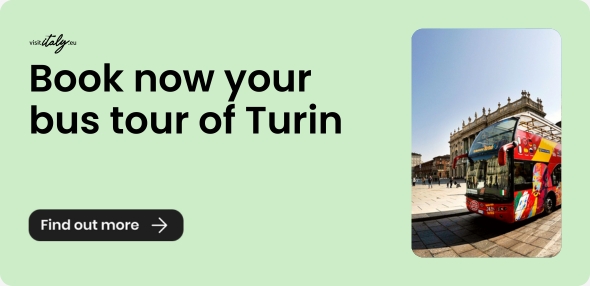
What to do in Coggiola

Coggiola offers its visitors a wide choice of things to do and see.
Its territory, immersed in the Sessera Valley, is rich in woods and trails for all tastes: from easy routes suitable for families to more challenging hikes for expert walkers.
In addition to trekking, it is possible to practice sports and activities in nature and there are several itineraries for cycling.
The historic centre and the surrounding area offer striking views and cultural attractions such as valuable religious buildings, museums and traditional shops.
Local gastronomy is another strong point of Coggiola. Cured meats and cheeses, polenta, mushrooms cooked in many different ways... stop by and taste the traditional Piedmontese dishes and desserts, cooked with fresh, seasonal ingredients.
Finally, there is no shortage of cultural, gastronomic and even sporting events that allow visitors to discover and experience the area authentically.
Coggiola is an excellent destination for both long stays and nice day trips. Any time of year will be ideal for enjoying the beauty of these views.
Spring and autumn will be special for those who explore the trails of this beautiful area.
Discover more about CoggiolaVisiting the historic centre
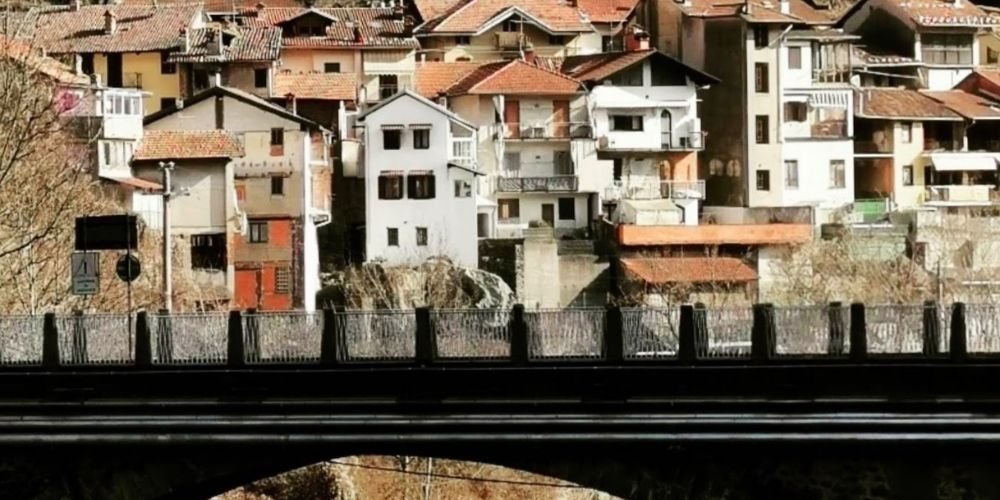
The first thing to do in Coggiola is to stroll through its picturesque historic centre characterised by narrow cobbled streets, small flower-filled squares, stone houses and typical mountain views.
The most important religious building in the historic village is the Parish Church of San Giorgio, an ancient Romanesque-style church that preserves some 15th-century frescoes.
You can stop at the Grandotti bakery and taste the excellent homemade bread and pastries, or move on to the Piantanida bakery-pastry shop where you will find many traditional Italian and Piedmontese sweets and gluten-free alternatives.
Do not miss the chance to taste typical products such as Paletta di Coggiola, excellent Piedmontese dishes and wines.
Places of cultural and historical interest in Coggiola
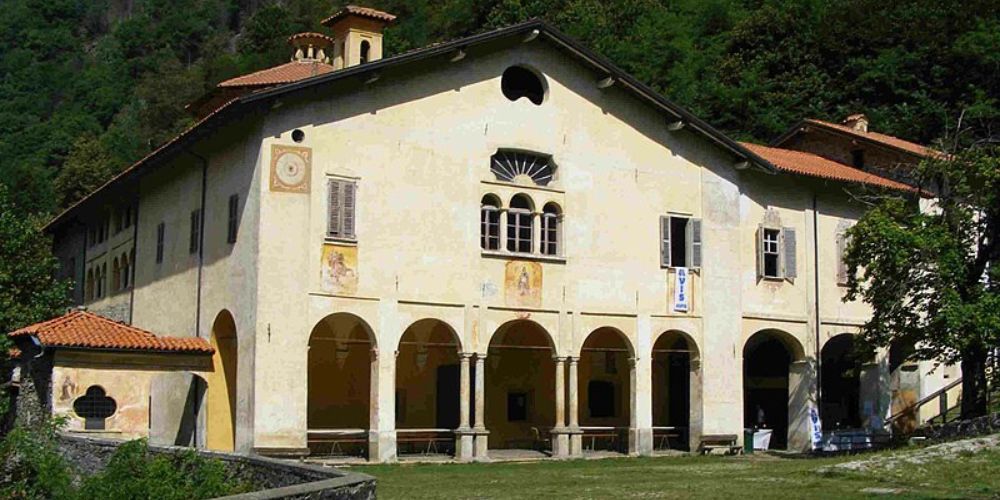
Santuario del Cavallero, Coggiola - ph. credit: F Ceragioli - wikipedia
Outside the historical centre of Coggiola, there are buildings of historical and cultural interest and of great spiritual value for anyone seeking tranquillity, peace and contact with nature.
The first place we recommend you visit is the Santuario del Cavallero, built-in 1730 on the spot where the Madonna appeared to a deaf-mute shepherdess who, following the vision, regained her speech and hearing.
This Sanctuary, which stands at the meeting point of the Cavallero Stream and the Sessera River, is a large building with an external colonnade with frescoes.
Inside, one can admire many paintings donated by the faithful for graces received. The church is surrounded by woods and overlooks a square with a fountain dating back to 1772.
The Santuario del Cavallero can be reached from Coggiola by an easy and not excessively long walk.
At 630 metres, on the border with the municipality of Pray, stands another important sanctuary: the Santuario dei Moglietti.
This building, dedicated to the Madonna delle Grazie, was built in 1892 on the site of a votive pillar with an image of the Madonna and child.
Today, the Sanctuary consists of a small church with an arcade, a bell tower and a small hermitage where hermits lived in the past, in total solitude. The old votive pillar is incorporated into the church.
This sanctuary can be reached by a dirt road from Fervazzo, one of the hamlets of Coggiola.
Finally, we recommend the Piane Sanctuary, in the hamlet of Piane.
This small church, dedicated to the Madonna of Oropa, is located along the road that connects Viera to Noveis and was built in 1911 by the inhabitants of the hamlets of Viera and Rivò, in thanksgiving for the end of the blackpox epidemic that claimed many victims, especially children.
The sanctuary houses a statue of the Madonna of Oropa, donated by the Bishop of Biella, Giovanni Garigliano.
Trekking and outdoor activities
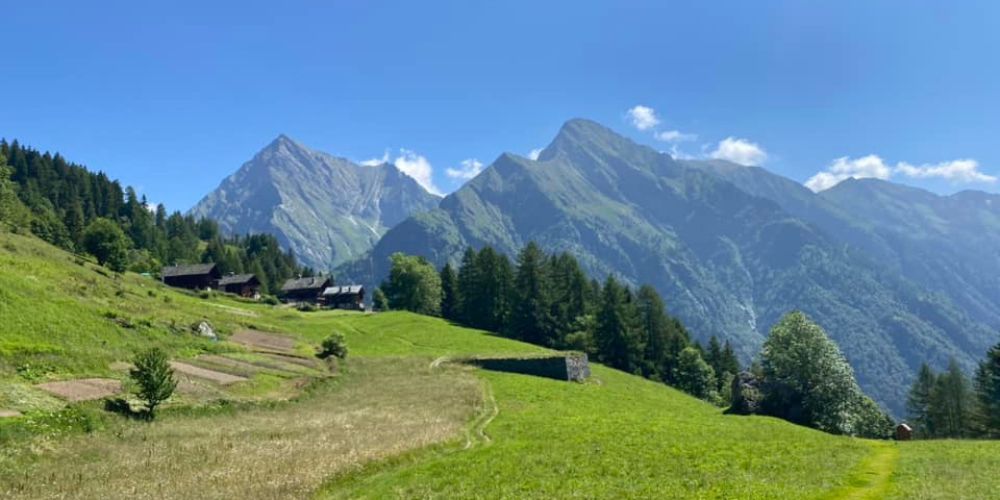
Trekking in Val Sessera - ph. credit: Cai Valsessera
In Coggiola, amidst luxuriant woods, meadows and mountains, we find paths for all tastes, offering emotions and unforgettable views.
The best way to explore this area is to walk while breathing pure air in the silence of nature.
Lovers of history and spirituality should not miss the Sentiero delle Valli della Fede (Path of the Valleys of Faith). It is a ring route that links the minor Marian sanctuaries in the central and eastern Biella area with Lake Orta.
This itinerary also passes by the Sanctuary of Cavallero and the Sanctuary of Moglietti. It is a route suitable for everyone, which runs through beech woods and flower-filled pastures, offering an experience of profound harmony with nature.
Those who want to take a day trip or a relaxing and not too demanding walk can reach on foot the Sanctuaries mentioned above, which are located outside the town centre, surrounded by unspoilt nature.
Another beautiful route is the Sentiero del Monte Barone, which leads to the summit of the mountain of the same name, the symbol of Val Sessera.
The fatigue of some sections of this route will be repaid by a splendid panorama of the Valdostan Alps, the Gran Paradiso, the south face of Monte Rosa, and part of the Po Valley with the lakes of Lombardy and Piedmont!
For details of all the trekking routes in the area, contact
Coggiola Outdoor - pro loco Coggiola , an association set up to clean and maintain the trails in the area.
Coggiola Outdoor also organises the 4 Enduro MTB, an international Enduro race with 6 main tracks for adrenaline-filled descents through the Val Sessera woods.
Lovers of sport and outdoor activities, in addition to trekking and mountain biking, can enjoy fishing and even paragliding!
The gastronomy of Coggiola

Paletta and polenta - ph. credit: Jacopo.piscina - Own work - wikypedia
The gastronomy of Coggiola, and Biella cuisine in general, is tasty and simple. The typical recipes are a mix of mountain pasture products and products from the valleys.
The traditional and typical product of Coggiola is the Paletta di Coggiola, a cured meat obtained from the shoulder of the pig, the bone that after being cut lengthwise, takes the shape of a shovel. Hence the name ‘Paletta’ ham.
According to valley tradition, the hot Paletta is accompanied by a plate of polenta or boiled potatoes. Alternatively, it can also be eaten raw with Biella apple mostarda.
Traditional Biellese dishes include soups, stews and the famous ‘pulenta cunscia’, a soft cream of maize cooked in a special pot (the paiolo), in which plenty of local cheese and butter are melted during cooking.
The first courses include ‘ris an cagnùn’, rice boiled and mixed with toma cheese and butter, and ‘minestra marià’ made with rice, chard or wild spinach.
Various typical cheeses are produced throughout the Biellese territory. Typical of the Val Sessera is the whole milk toma cheese, called Maccagno.
Lastly, among Biellese desserts, we mention the delicious and soft hazelnut cake, made with local hazelnut flour, eggs, butter and sugar, and the famous canestrelli, baci di dama and the light and tasty torcetti biellesi.
What to do in Coggiola: events and exhibitions
Among the green hills of Coggiola, one breathes an air rich in tradition and history. The village is lively and cultural and gastronomic events occur throughout the year.
The most important event, linked to typical local products, is the Festa della Paletta. The festival takes place the second Sunday of October and the village is filled with colours and flavours.
The small squares and main streets are filled with stalls offering typical local products and dishes.
The town's patron saint, St George, is celebrated on 23 April.
The patron Saint's festival of St George takes place the weekend before or after 23 April and includes a series of initiatives and events in which all the town's associations participate.
The most important moment of the event is the procession with mass.
On the first weekend of July at the Moglietti Refuge, the Moglietti feast takes place.
This feast has a programme that includes dinners with typical products, music and also races for young and old.
Every winter, in Rivò, one of the hamlets of Coggiola, an evocative nativity scene is set up with statues at human height, depicting scenes of daily life in the village.
It is a work of art that attracts visitors from all over the province of Biella.
How to get to Coggiola
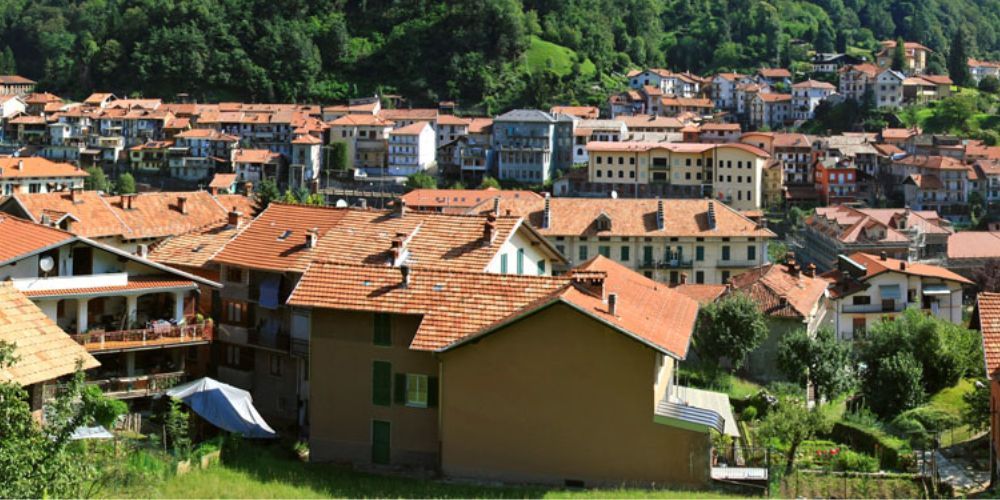
Coggiola can be reached by car via the A26 motorway (Genoa Voltri - Gravellona Toce) - Ghemme-Romagnano Sesia exit (26 km), by the provincial road 71 - Serravalle Sesia-Coggiola, and by the provincial street Coggiola-Trivero.
By train, the nearest stops are Borgosesia and Cossato. From Borgosesia, continue by bus on the Novara - Varallo Sesia line. From Cossato, continue by bus on the Biella - Novara line.
The nearest airports are Milan Malpensa (61 km) and Turin Caselle (99 km).
What to visit around Coggiola
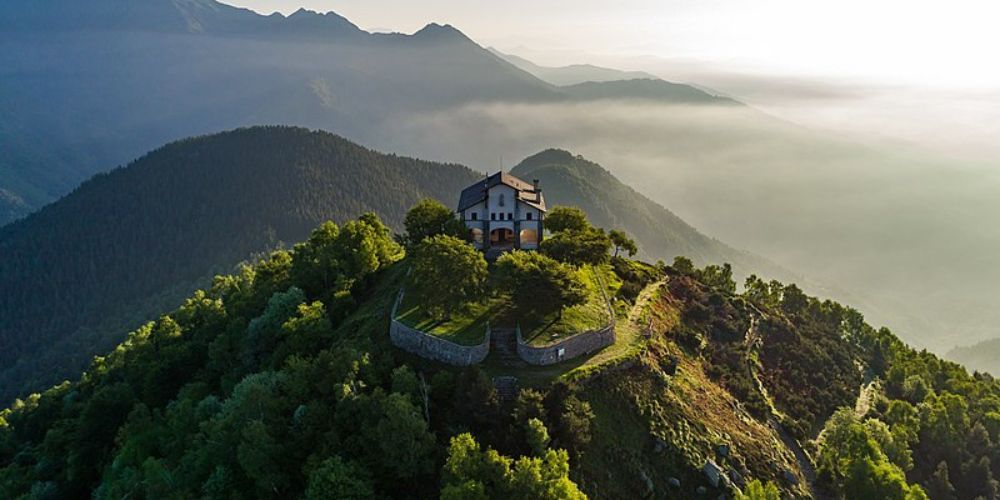
Oasi Zegna - Santuario San Bernardo - Ph. Credit: Erisimo - Own work - wikypedia
Coggiola is also an excellent starting point for exploring the province of Biella and an interesting and little-known part of Piedmont.
Among postcard-perfect landscapes, you will encounter places rich in history and culture.
The first place we recommend you visit, a 15-minute drive from Coggiola, is the Oasi Zegna. It is a natural park of 100 square kilometres with free access.
The Oasis is open to all who wish to discover the woods, pastures, mountain pastures and animals of the Pre-Alps above Trivero Valdilana.
The best way to visit the Oasis is to take the Zegna Panoramic Road by car or motorbike.
This 26-km-long road connects the eastern part of the province of Biella with the Cervo Valley.
Stopping along this road, it is possible to take walks with breathtaking views and discover the cultural attractions of the area.
A short drive away are ancient villages such as Ricetto di Candelo, Sordevolo and Cossato, which still retain local traditions and the charm of the past.
At the foot of the Alps, just under an hour's drive from Coggiola, lies Biella, a city of art, history and beer!
Considered the capital of wool and famous for its textile industry, it impresses with its historic centre characterised by cobbled alleyways, noble palaces and fine churches.
Once in Biella, a visit to the Sanctuary of Oropa, the most important Marian sanctuary in the Alps and the destination of one of the most famous walks in Piedmont, the Oropa Way, is a must.
This imposing sanctuary is about 60 km from Coggiola, and together with the sacred Mount of Oropa, was declared a Unesco World Heritage Site in 2003.
Those who want to discover a little more of Piedmont can reach the beautiful medieval city of Asti and the first capital of Italy Turin, in 1 hour and a half, by car.
Discover the attractions of Turin and Piedmont with the Torino + Piemonte CardAbout the author
Written on 01/08/2024

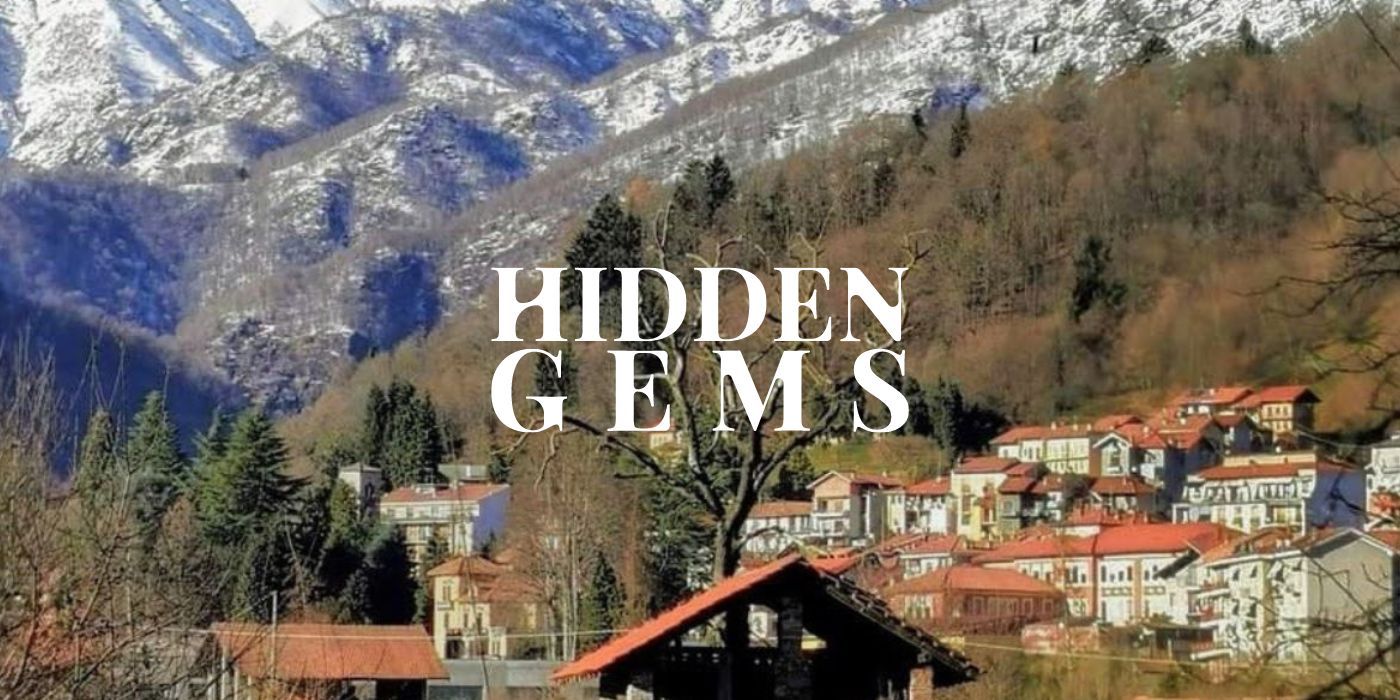
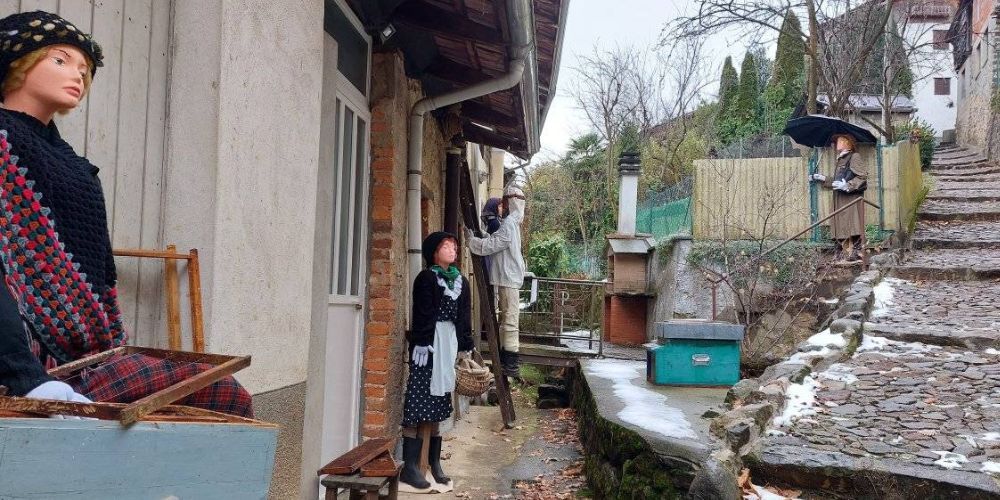

Ilaria Capatti
What to see and do in Coggiola: relaxation, nature and culture in the Biellese mountains.